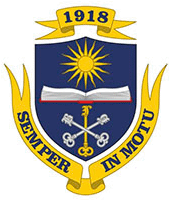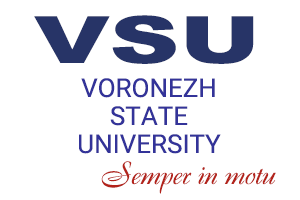June at Voronezh State University is not only time for exams but is also the time when bachelor's and master’s students defend their graduation papers. Among the works presented to the committees there have been research projects of enormous potential for science and production. Ksenia Kharina, a master’s student from the Faculty of Applied Mathematics, Informatics, and Mechanics, and her supervisor Sergey Medvedev, associate professor at the Department of Computational Mathematics and Applied Information Technologies, told us about one of such projects:
“My master’s dissertation was dedicated to different approaches to tracing the trajectories of a robot manipulator. It was my scientific supervisor who came up with the idea. Sergey Medvedev suggested that I should study the methods of tracing trajectories, i.e. transition of a robot manipulator from one position to another, and I chose the mathematical methods that could be used to solve this task. Imagine, there is a robotic arm with N joints that can take M positions. There is point B in space which the robotic arm has to reach and grab (let this point be called the target point). We need to invent a mathematical tool that could be used to calculate the trajectories for the fastest and most precise transition of the robot manipulator from the starting position to the target position. We chose three methods to solve the task: supervised learning, heuristic algorithms (in my case, ant colony optimization), and reinforcement learning. Supervised learning makes it possible to get fast approximate values for the task. Accurate values depend of the quality of supervised learning, the selected algorithm, and the quality of the prepared learning data set. Ant colony optimization algorithms are a type of heuristic algorithms. They use “ant colony memory” and guarantee convergence, however, it is difficult to determine the number of required integrations. Q-learning is a method used in artificial intelligence with agent models. It is a type of reinforcement learning experiment. Using the reward, which it receives from the environment, the agent figures out a Q-value function (Q) which helps it to choose deliberately the behaviour strategy and to take into account the experience of its previous interaction with the environment. One of the advantages of Q-learning is the ability to compare the estimated value of the available actions without creating a model of the environment. Similar tasks are solved by researchers who develop robots for production, medicine, research, rescue operations, etc. However, the existing research projects deal with engineering tasks whereas ours is exclusively algorithmic. We conducted a comparative analysis of the above-mentioned methods and determined the conditions and tasks that they are most suitable for and which approach is preferable in each particular case. In future, it would be interesting to have more experiments with different machine learning algorithms and to try combinations of heuristic and Q-learning algorithms. According to some estimations, the results might be really impressive,” said Ksenia.
Sergey Medvedev emphasised that the research conducted by the student combined a number of scientific fields studied at the faculty. In future, it will be highly beneficial for the research and educational processes at the Laboratory of Mechatronics and Robotics of the Faculty of Applied Mathematics, Informatics, and Mechanics.
“Ksenia’s work contributes to the research aimed at determining the optimal position and trajectory of a robot manipulator. Currently, the Laboratory of Mechatronics and Robotics has a pool of algorithms which can be used to solve the task under various conditions. Ksenia’s work is important because firstly, it contributed to the pool of algorithms, and secondly, it formulated certain preferences regarding the choice of different algorithms. Also, the research helped to bring together the faculty's developments in different fields. In future, her master’s dissertation will encourage further cooperation between different departments and will give way to new developments.


